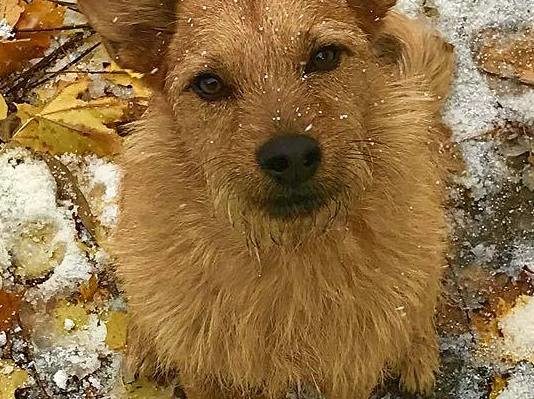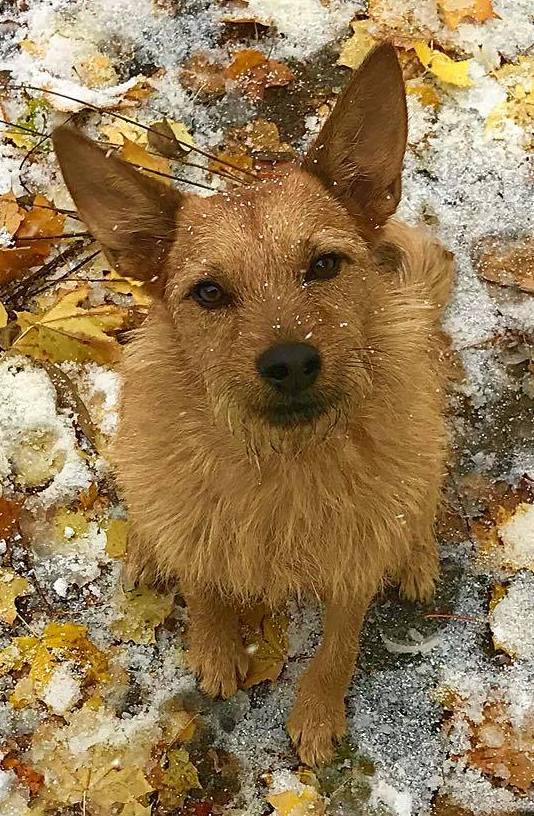
What your dog needs in the way of grooming from you, his human family, is simple: time spent hands-on, up close and personal, every single day.
I don’t mean petting, hugging, scratching him on the head, or chucking her under the chin. You probably do that a lot without thinking. It’s very likely one reason you have a dog—the comforting physical contact with a warm, furry creature. It’s highly unlikely you need to be told to spend more time petting your dog!
I’m talking instead about what amounts to a full physical examination of the outside of your dog, what you can see and what you can feel. I mean running your hands—and your eyes—over every single part of your dog’s body . . . every single day. It’s a responsibility you accept when you bring a pet into your life. It’s your job.
You are his caretaker.
You are her guardian.
Your dog cannot speak, cannot tell you what is wrong. He won’t notice that little bump, she won’t feel that burrowing tick . . . until it starts to hurt. You need to find that bump or bite before it hurts—before it causes lasting damage or blows up into a serious health issue.
You can’t do that from across the room. You can’t do that online. You must set aside a few minutes every day to sit with your dog and do a full physical going-over—by touch and by sight—of all parts of your dog. It takes only a few minutes.
Your dog will enjoy those few minutes if you make that time rewarding for him. But remember, you don’t get to say what is rewarding to your dog. That’s entirely up to the dog.
Don’t think, either, that it’s simply a matter of providing enough peanut butter for the dog to lick while you examine him. That works for many dogs, but not all dogs like being handled physically. If your dog doesn’t like it, peanut butter may not be enough to change his mind.
Should your dog object to being handled by you—especially if his reaction involves attempts to escape, frightened behavior, or actions that seem threatening or aggressive toward you or your family members—consult your veterinarian before you proceed. Find out if your dog’s behavior has a physical cause.
If your veterinarian rules out a physical cause, ask for a referral to a veterinary behaviorist or a reputable dog trainer who specializes in behavior.
Punishment is not an appropriate response or training method for a dog that fears handling.

Photo by Heather Thorstenson
Nails
Ask any groomer, trainer, or dog professional: What grooming task do novice dog owners most often neglect? You will invariably get a quick response—nails!
“Trimming dog nails is a daunting task,” novice dog owners moan. Heck, a lot of very experienced dog owners—even dog professionals—don’t much enjoy trimming their dogs’ nails. (You can imagine how their dogs feel about it!)
I often ask first-time dog owners who are also parents if they take their toddlers to the pediatrician to get their nails trimmed. “Uh, no,” is always the answer. But human babies don’t come pre-programmed to accept nail trimming, either! Yet somehow, human parents manage without weekly appointments at the clinic.
Very few dogs have nails that never need trimming. Many can use a nail trim once a week. Start the gentle handling of paws and nails while the pup is still with his doggy mother, and you’ve laid a foundation for a cooperative dog during nail-trimming.
You just got a puppy or a grown dog and you know nothing about trimming dog nails? Ask your veterinarian to show you how long your puppy’s or dog’s nails should be, for health and safety’s sake. Now you have a specific goal.
For novice dog owners, I recommend the process used by puppy raisers for many assistance dog organizations: trim one nail a day, for life. You’ll be there anyway, going over your dog physically and by sight. Trim one nail, too. Even dogs that get overwhelmed by having all their nails trimmed in one sitting can learn to tolerate (even enjoy) having one nail trimmed a day.
Nail trimming is not done for looks, although well-trimmed nails are certainly one sign of a well cared-for dog. Nail trimming is done for health. Nails that grow too long can interfere with balance and mobility. Young dogs with overlong nails can’t navigate well on slippery surfaces, for example. Older dogs with already uncertain steps suddenly find stairs too daunting. Short-term effects can be bad, but imagine what it does to a dog’s structure to have overlong nails for life. It could be crippling.
Many years ago, I helped a dog who had stopped getting up to walk. His human feared the dog was paralyzed. It wasn’t easy (the dog’s paws were very furry), but I ultimately found dog nails several inches longer than they should have been. The dog, a large breed and well past youth, had “given up” trying to walk . . . for what turned out to be that very simple reason. I trimmed off as much nail as seemed safe at one time. Right away, the dog was not only able but very willing to walk again.
What are your alternatives if you choose not to do the nail trimming yourself?
The only unacceptable alternative is not trimming your dog’s nails at all, ever!
▪ Veterinary clinics usually offer nail-trimming services. In most cases, it’s done by a veterinary technician or a veterinary assistant, often on a drop-in basis. For dogs with anxiety, veterinarians can prescribe medication to be given before the visit. Dogs can be sedated, if necessary, and extremely overlong nails can be cut back and cauterized.
▪ Groomers usually offer nail trimming as a stand-alone service, so dogs who get an overall grooming every couple of months can stop in every few weeks to keep up with nail trimming at a minimal cost.
▪ Experienced dog sitters and dog walkers may also be willing to trim your dog’s nails regularly, as a part of the services they offer. Expect to pay an additional charge (although some professionals who deal regularly with your dog may offer nail trimming as a courtesy).
Want to trim your dog’s nails but are fearful that you’ll screw it up, made him bleed, make her mad?
Try watching online videos—those that use force- and fear-free methods only, of course. Figure out what equipment you need (it varies, depending primarily on the size of the nail, which isn’t always dependent on the size of the dog), purchase that equipment, then watch enough videos that you feel confident you know what to do. Then do it.
Still scared? Hire help! Ask your breeder, groomer, class instructor, dog trainer, or dog walker for a nail-trimming lesson. Be willing to pay. If you’re offered a lesson for free, tip well or deliver homemade cookies if that’s more your style. Or do both!
What’s the next regular grooming task that a novice dog owner is likely to neglect?
Next week—tooth-brushing. Why it’s so important, what needs to be done, what tools and products are required, and how to keep your dog comfortable while you deal with his dental hygiene.



